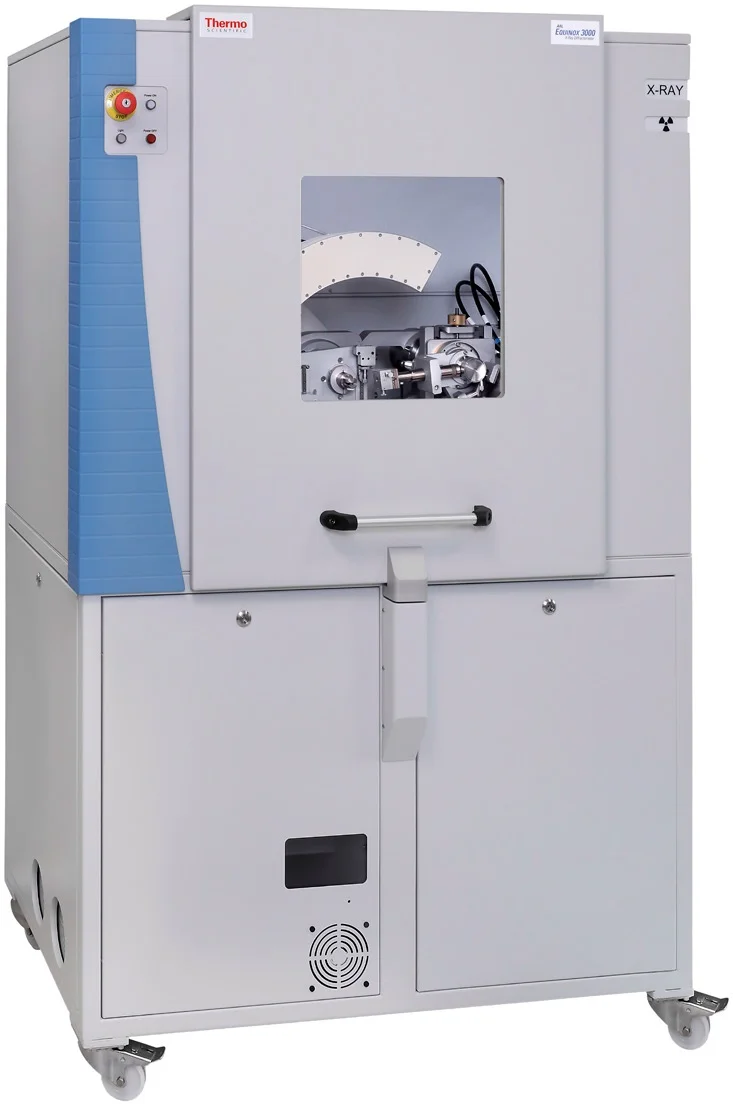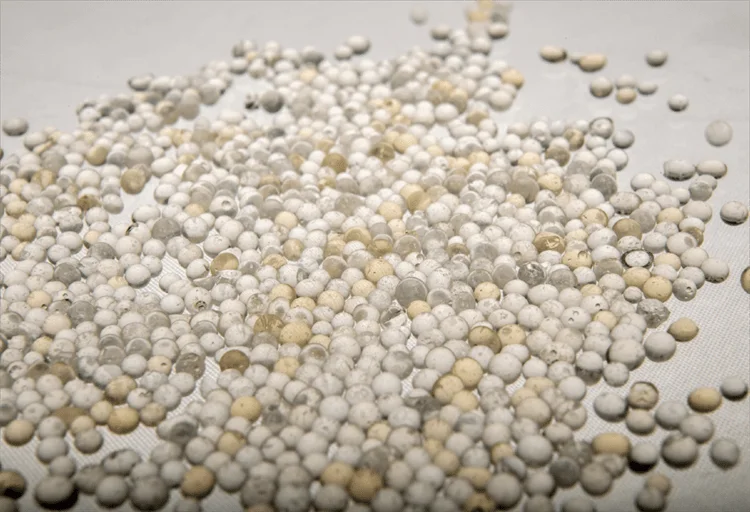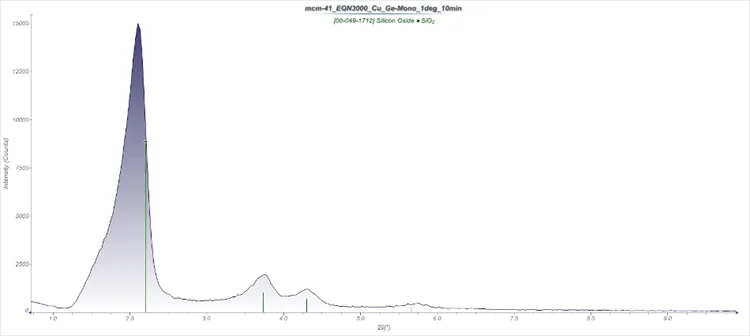A class of materials with pore sizes ranging from 2 to 50 nm, mesoporous materials are formed by a matrix that is typically created with amorphous silica, alumina, or transition metal oxides. Though the most widely used material is mesoporous carbon, these types of materials have also found application as catalysts or catalyst supports.
Within energy storage devices, mesoporous carbon has found wide application, and, in contrast to zeolites, the pores are larger in mesoporous carbon, which means that both the pore size and their distribution can be easily adjusted.

Figure 1. ARL EQUINOX 3000 X-ray diffractometer. Image Credit: Thermo Fisher Scientific - Elemental Analyzers and Phase Analyzers
Two of the most widely used mesoporous materials made from silica are MCM-41 and MCM-48. The pores range from 2 to 6.5 nm and MCM-41 has been applied within catalyst applications as an adsorbent for the treatment of wastewater for chemical reactions. Recently, it has been hypothesized by various studies that such materials could even be used as a system support material in drug delivery.
The direct measurement of structural arrangement and pore size is made possible by utilizing X-Ray diffraction (XRD). Measurements are needed at very low (<1° 2θ) diffraction angles, which is facilitated by the Thermo Scientific™ ARL™ EQUINOX 3000.
The Thermo Scientific™ ARL™ EQUINOX 3000 instrument can measure the low angles that are needed for this type of investigation, and it eliminates the need for preparations; the standard setup allows low-angle measurements to be performed easily (Figure 1).

Image Credit: Thermo Fisher Scientific - Elemental Analyzers and Phase Analyzers
About the ARL EQUINOX 3000
The ARL EQUINOX 3000 - an entry-level full-scale laboratory instrument - uses a 3 kW generator, which powers a long, fine focus X-Ray tube that is connected to both focal or parabolic mirror optics or a Ge (111) monochromator, which offers Kα radiation with the highest flux or brilliant Kα1 radiation, which is ideal for the high resolution.
Highly flexible, the ARL EQUINOX 3000 offers a wide range of accessories to facilitate use in both quality assurance, quality control and in-situ studies.
The unique curved position sensitive detector (CPS) has been specially designed for the asymmetric setup seen in the ARL EQUINOX instrument series and is used to measure all diffraction peaks simultaneously in real-time. It is therefore easy to obtain both transmission and reflection measurements as a result of this without needing to realign the instrument.
Case Study
An ARL EQUINOX 3000 XRD equipped with a Cu tube and a Ge (111) monochromator was used to perform the X-Ray diffraction measurements. A 10-minute measurement was carried out with an incidence angle of 0.5° with a powdered sample, and MDI JADE 2010 and ICDD pdf4+ database was used to evaluate the data.

Figure 2. Diffraction pattern on MCM-41 from 0.74° - 10° 2θ (reference positions for MCM-41 as green tick marks). Image Credit: Thermo Fisher Scientific - Elemental Analyzers and Phase Analyzers
Results
It was deemed possible to measure intensities beginning at 0.74 ° 2θ when using a low incidence angle of 0.5° (Figure 2).
A diffraction pattern in direct accordance with MCM-41’s structure is clearly illustrated by the resulting measurement (Figure 2, green tick marks). Clearly evident, too, was an excellent signal-to-noise ratio. Another conclusion was that even shorter measurement times would still produce valuable data.
Summary
Users can successfully analyze mesoporous materials, even at very low diffraction angles of 0.74° 2θ, by using the ARL EQUINOX 3000 XRD in conjunction with MDI JADE 2010 software suite and the ICDD pdf4+ database. Users can, therefore, clearly identify the structure, like that which is seen with MCM-41, even with short measurement times.
The ARL EQUINOX 3000 is therefore highly suitable for quality assurance and quality assurance, given that such analyses do not require a specific setup or any special preparations: this is a tool that is not only flexible, accessible and user-friendly but will also satisfy the highly stringent advanced analytical demands required by academic institutions.
Acknowledgments
This article was produced from materials originally written by Ju Weicai and Dr. Simon Welzmiller from Thermo Fisher Scientific.

This information has been sourced, reviewed and adapted from materials provided by Thermo Fisher Scientific - Elemental Analyzers and Phase Analyzers.
For more information on this source, please visit Thermo Fisher Scientific - Elemental Analyzers and Phase Analyzers.